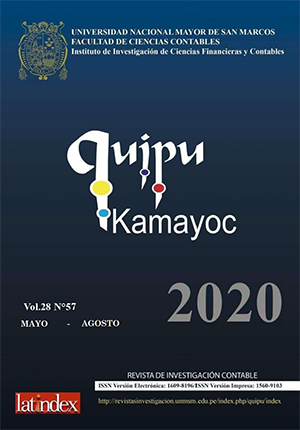Small and medium company valuation by discounted cash flow: philosophical and epistemological basis
DOI:
https://doi.org/10.15381/quipu.v28i57.18473Keywords:
Acquisitions, cost of capital, finance, cash flow, Mergers, valuationAbstract
The majority of experts recognizes the cash flow discount as the best technique to value SMEs. However, there is a divergence in the concepts and criteria that a valuation model must incorporate. neoclassical finance, heiress of logical positivism as an epistemological basis, maintains the efficient market hypothesis (EMH) y the capital asset pricing model (CAPM), to calculate the discount rate. On the contrary, behavioral finance, heiress of Husserl's phenomenology, suggests incorporating human behavior or behavior into its valuation models. On taking position, on one way or another, from a philosophical point of view, a valuation model, should lead us to the encounter of truth, justice and fairness in decision making. Both aspects of company valuation, philosophical and epistemological, are addressed in the present research, analyzing the different theories and positions in force, ending with a final position regarding the 2 valuation models of companies currently existing within Neoclassical Finance: the Damodaran Model and the Fernández Model.
Downloads
Downloads
Published
Issue
Section
License
Copyright (c) 2020 Germán Alfredo Boza Pró, Jeri Gloria Ramón Ruffner de Vega

This work is licensed under a Creative Commons Attribution-NonCommercial-ShareAlike 4.0 International License.
AUTHORS RETAIN THEIR RIGHTS:
a. Authors retain their trade mark rights and patent, and also on any process or procedure described in the article.
b. Authors retain their right to share, copy, distribute, perform and publicly communicate their article (eg, to place their article in an institutional repository or publish it in a book), with an acknowledgment of its initial publication in Quipukamayoc .
c. Authors retain theirs right to make a subsequent publication of their work, to use the article or any part thereof (eg a compilation of his papers, lecture notes, thesis, or a book), always indicating the source of publication (the originator of the work, journal, volume, number and date).






